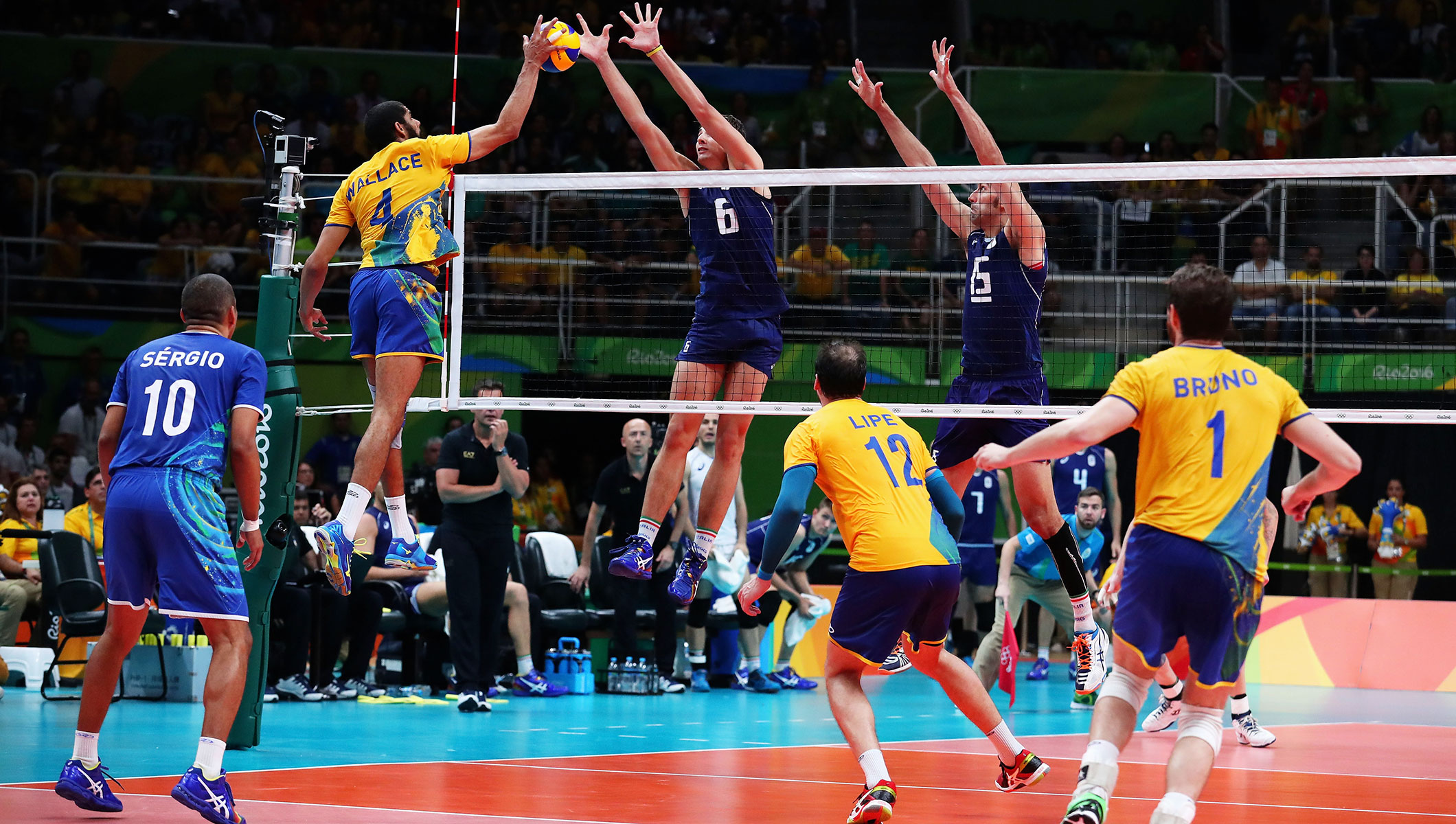Rules and Gameplay of Olympic Volleyball

Olympic volleyball, a dynamic and strategic sport, captivates audiences worldwide with its intense rallies and thrilling displays of athleticism. Understanding the intricate rules and gameplay is crucial to appreciating the nuances of this captivating sport.
Scoring System
The scoring system in Olympic volleyball is straightforward yet captivating. A team scores a point by successfully landing the ball on the opponent’s court. The first team to reach 25 points wins the set, with a two-point lead required. A match consists of a best-of-five set format, with the first team to win three sets claiming victory.
Rotations and Serving, Olympic volleyball
The game revolves around a series of rotations, with each player occupying a specific position on the court. After each point, the team rotates clockwise, ensuring all players have the opportunity to play in different positions. The player in the back right position serves the ball, aiming to send it over the net and into the opponent’s court. The serve is a crucial aspect of the game, as it initiates the rally and can set the tone for the point.
Attack Strategies
Volleyball is a game of strategic attacks, where teams aim to strike the ball forcefully and precisely, aiming to land it on the opponent’s court. There are various attack strategies employed, including:
- Spike: A powerful, downward-directed hit aimed at landing the ball on the opponent’s court.
- Tip: A softer, angled shot that is often used to catch the opponent off guard.
- Quick Attack: A fast, aggressive attack that is executed quickly after the set, aiming to surprise the opponent.
Blocking and Defensive Strategies
Blocking is a key defensive strategy in volleyball, where players jump at the net to try to prevent the opponent’s attack from landing on their court. Blocking can be effective in stopping powerful spikes and can also be used to deflect the ball back into the opponent’s court. Defensive strategies also involve:
- Digging: A technique used to prevent the ball from landing on the court by diving or sliding to reach the ball.
- Passing: A technique used to control the ball after a serve or attack, aiming to set up a teammate for a successful attack.
Positions and Roles
Each player on the court occupies a specific position with designated roles:
- Setter: The player responsible for setting up the attack by sending the ball to a teammate in a position to attack. The setter is the “quarterback” of the team, directing the offense.
- Outside Hitter: The primary attacker on the team, typically responsible for powerful spikes and aggressive attacks.
- Middle Blocker: The player who specializes in blocking at the net and often contributes to the attack with quick attacks.
- Opposite Hitter: The player who plays opposite the setter and is responsible for attacking from the back row.
- Libero: A defensive specialist who is not allowed to serve or block but is a key player in receiving the serve and digging attacks.
The roar of the crowd, the thunder of the spike, the thrill of victory – Olympic volleyball is a spectacle of athleticism and passion. But after the final whistle, a different kind of victory awaits: a refreshing escape with a key lime colada blue chair bay , a taste of paradise that mirrors the vibrant energy of the game.
The sweet, tart blend of flavors evokes the sun-drenched beaches and the joyful spirit of the Olympics, a perfect way to celebrate the triumphs and the journeys of these extraordinary athletes.
The energy of an Olympic volleyball match is electrifying, each spike and block a testament to the athletes’ dedication. But even amidst the intensity, there’s a need for focus and strategy, a quiet space to analyze plays and plan the next move.
A folding study table and chair could be the perfect solution, offering a portable and efficient workspace for coaches and players alike. Whether it’s in the locker room or a quiet corner of the stadium, this compact setup allows for strategic planning and mental preparation, ensuring that the team is always ready to rise to the challenge of the next serve.
